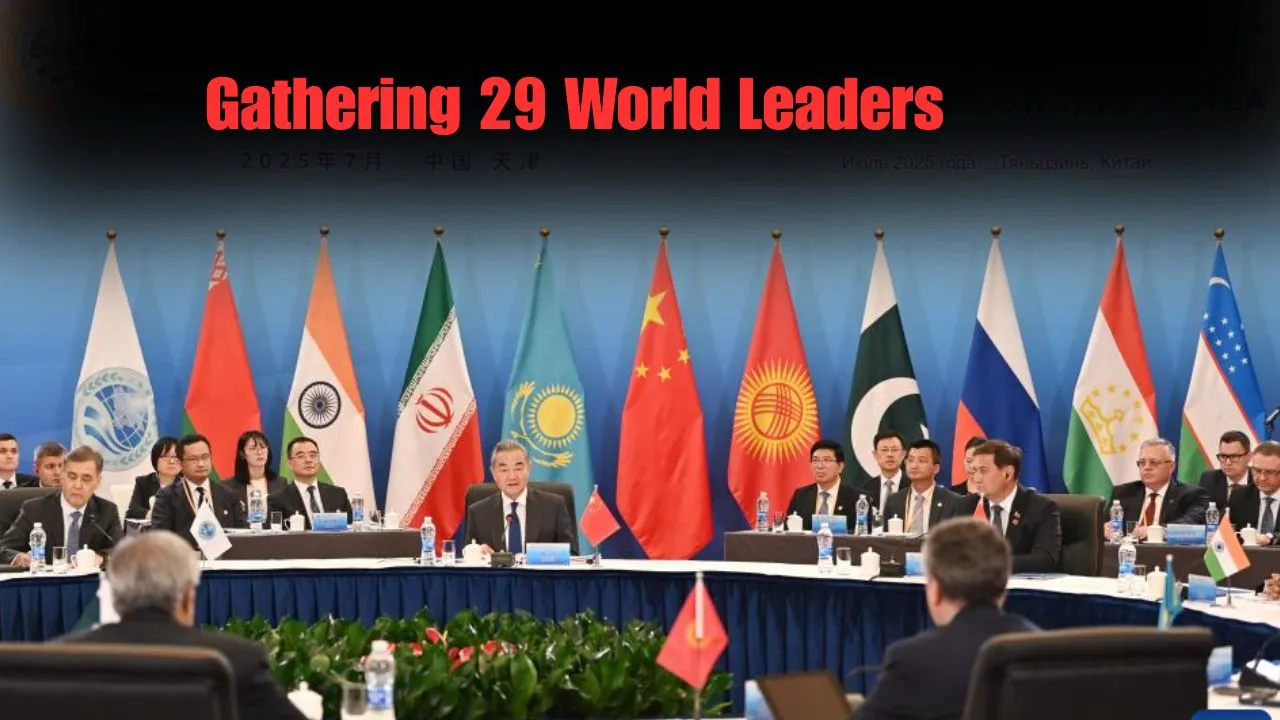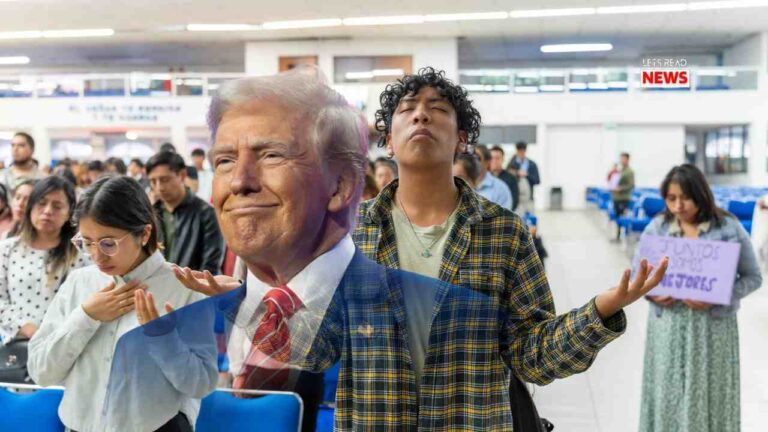The Tianjin Summit: A Pivotal Moment for Global South Solidarity Amid U.S. Pressure

In a world increasingly defined by economic tensions and shifting alliances, the upcoming summit in Tianjin, China, from August 31 to September 1, 2025, stands as a landmark event. Gathering 29 world leaders, including India’s Prime Minister Narendra Modi, Russian President Vladimir Putin, and Chinese President Xi Jinping, this Shanghai Cooperation Organization (SCO) meeting is more than a routine diplomatic gathering.
It symbolizes a deepening “Global South solidarity” in response to intensified U.S. tariffs and pressure tactics. As the United States under President Donald Trump escalates its trade wars, nations like India, China, and Russia are drawing closer, potentially reshaping America’s position in the global order.
This summit arrives at a critical juncture. The U.S. has ramped up tariffs on key trading partners, pushing them toward alternative alliances. What began as targeted measures to address trade imbalances has evolved into a broader strategy that many view as coercive. In turn, the Tianjin Summit highlights a pragmatic recalibration among non-Western powers, fostering cooperation that could diminish U.S. leverage in geopolitics, economics, and global governance.
The Current Geopolitical Landscape
The backdrop to the Tianjin Summit is a web of strained relations and strategic pivots. U.S.-India ties, once bolstered by shared interests in countering China’s influence, have soured significantly. President Trump’s administration has imposed tariffs of up to 50% on Indian imports, coupled with the abrupt cancellation of bilateral trade talks. This escalation has jeopardized the $200 billion annual trade volume between the two nations and undermined years of collaboration in defense, technology, and strategic initiatives like the Quad (comprising the U.S., India, Japan, and Australia).
U.S. officials have openly expressed skepticism about India’s warming relations with China and Russia, arguing that such ties enable Russia’s war economy and erode efforts to isolate Beijing. However, from New Delhi’s perspective, these criticisms appear unfair and hypocritical, especially as India grapples with the economic fallout from U.S. policies. Commerce Minister Piyush Goyal has publicly stated that India’s shift toward China is not directly linked to U.S. trade pressures, but the timing suggests otherwise.
Meanwhile, the India-China relationship is undergoing a notable thaw after years of border tensions, including the deadly 2020 Galwan Valley clash. Diplomatic warmth is evident in resumed direct flights, revived border trade, and eased export restrictions. China has lifted curbs on rare earth minerals and fertilizers—vital for India’s tech and agricultural sectors—while India has begun exporting new energy products to China. Prime Minister Modi’s visit to China, his first in seven years, underscores this reset. Analysts attribute this rapprochement to mutual interests in countering U.S. economic coercion, with both nations seeking stability amid global uncertainty.
The summit’s optics are meticulously crafted by host China. President Xi Jinping aims to demonstrate what a post-U.S.-led world order might entail, emphasizing multilateral blocs that prioritize economic and diplomatic unity over Western hegemony. While concrete outcomes may be modest—focusing on security cooperation, trade facilitation, and counter-terrorism—the event’s scale as the “largest-ever” SCO summit amplifies narratives of multipolarity. The inclusion of leaders from across Asia, Africa, and beyond reinforces the Global South’s pushback against U.S.-dominated systems.
Implications for the United States
The Tianjin Summit poses multifaceted challenges to America’s global standing, accelerating trends that could erode its influence in key areas.
Diminished Geopolitical Leverage
At its core, the summit represents a diplomatic setback for Washington. The U.S. has long invested in dividing potential rivals, particularly by aligning India against China through initiatives like the Indo-Pacific Economic Framework (IPEF) and the Quad. However, as India and China mend fences, these coalitions risk fragmentation. The extension of Global South solidarity could lead to new security and trade frameworks that exclude or marginalize U.S. input, making it harder for America to maintain cohesion in anti-China alliances.
Economic Repercussions and Alternative Networks
Economically, the summit threatens to sideline U.S. businesses. As China, India, and Russia deepen ties, they are exploring supply chains, currency swaps, and technological collaborations that bypass dollar-based systems. China’s trade surplus with the Global South—now exceeding its surplus with the U.S.—illustrates this shift. Initiatives like Xi’s pledge to eliminate tariffs on African imports signal a strategic bid to dominate South-South trade.
Furthermore, the coordinated support for upcoming BRICS summits—hosted by India in 2026 and China in 2027—hints at institutionalizing alternatives to Western-led bodies like the IMF and World Bank. For American firms, this means potential disadvantages in accessing markets, resources, and innovations, as partners increasingly opt for non-U.S.-centric networks.
Narrative Shifts and Diplomatic Isolation
The summit’s narrative power cannot be understated. It portrays the U.S. as an unpredictable actor wielding tariffs and sanctions as weapons, unsettling allies and encouraging hedging strategies. Washington’s rebukes of India for its Russia ties have met with a cooler reception in New Delhi, fostering perceptions of American overreach. This could isolate the U.S. diplomatically, as more nations seek “insurance” against economic coercion by aligning with emerging blocs.
Prospects for India-China Rapprochement
While deep-seated issues persist—such as unresolved border disputes and China’s alliance with Pakistan—the summit could catalyze incremental progress. Expectations include troop withdrawals along contested lines and further trade liberalization. This pragmatic collaboration reduces U.S. influence in mediating or shaping bilateral dynamics, potentially leading to a more autonomous Asian order.
A Broader Trend Toward Multipolarity
The Tianjin Summit is emblematic of a larger transformation. Non-Western powers are asserting themselves, driven by shared grievances over U.S. policies. Russia’s role as an energy and arms supplier to India and China strengthens this triad, while broader Global South participation amplifies calls for reformed global governance.
For the U.S., the hurdles are mounting. Coalition-building in Asia becomes tougher, economic dominance wanes, and regional security leadership is contested. Yet, America retains significant advantages in innovation, military might, and soft power. The key question is whether Washington can adapt—perhaps by recalibrating its tariff strategy or engaging more constructively with the Global South.
In summary, the Tianjin Summit marks a watershed in international relations. By fostering unity amid U.S. pressures, it underscores the rise of a multipolar world. As leaders convene in China, the event not only highlights immediate shifts but also sets the stage for long-term changes in global power dynamics. The world watches closely, for the outcomes could redefine alliances and economies for years to come.
Sources and Further Reading:
This article draws on recent reports from outlets including Financial Express, Al Jazeera, NDTV, Reuters, The New York Times, India Briefing, Nikkei Asia, Economic Times, Greater Kashmir, and official statements from India’s Ministry of External Affairs. For detailed coverage, refer to the linked references in related analyses.
Read more:






